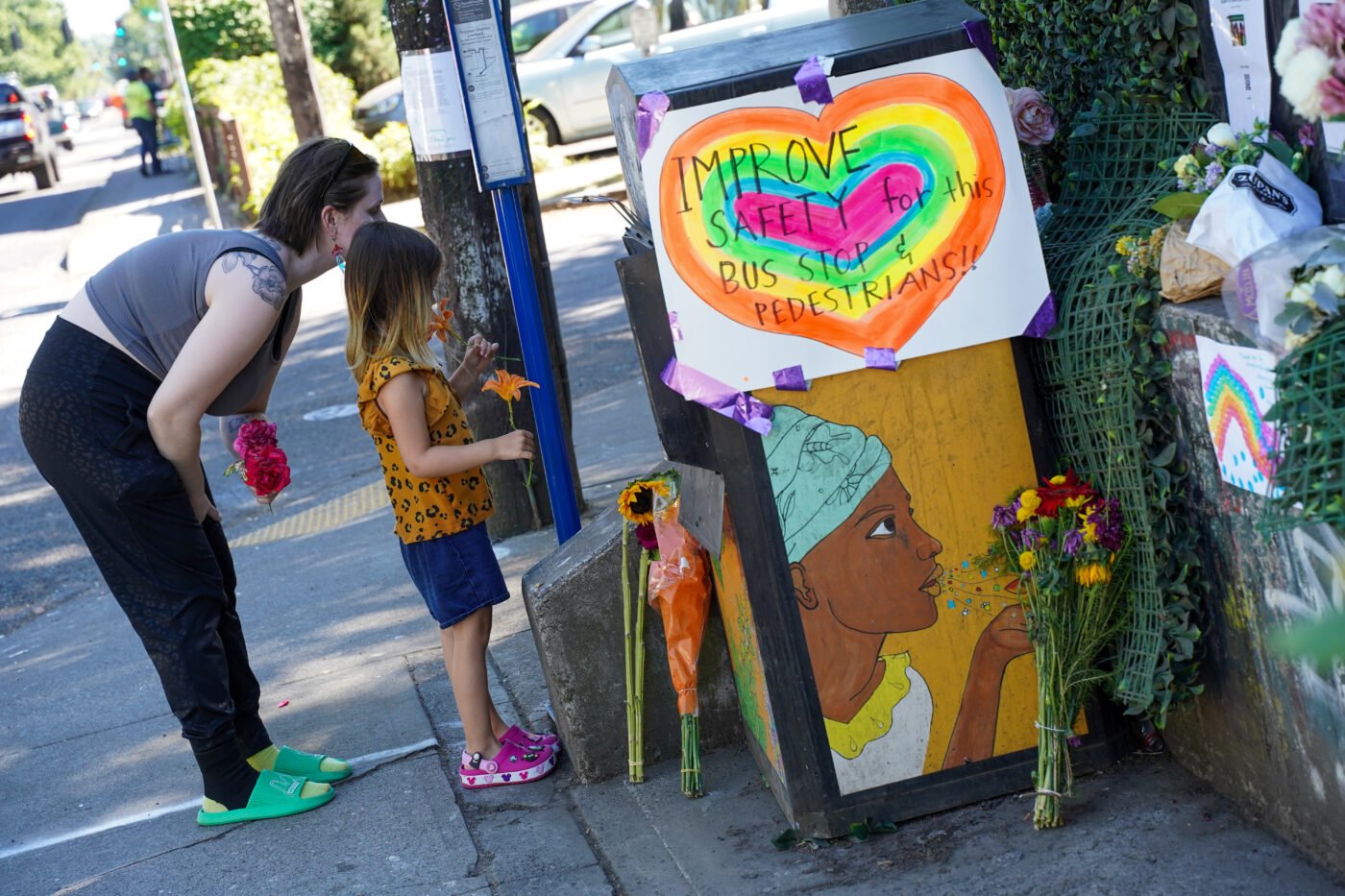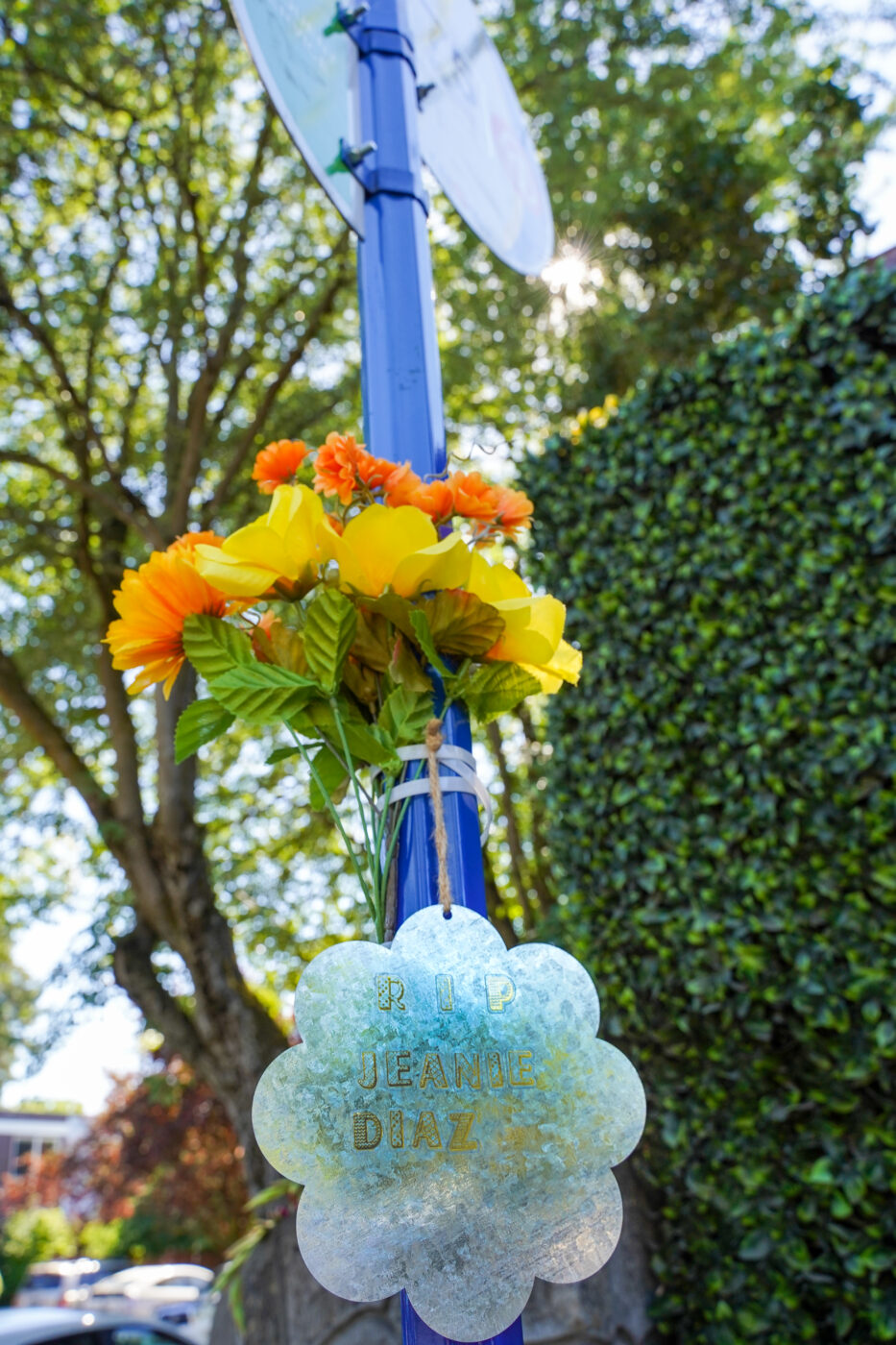Moments before Jean “Jeanie” Diaz was hit and killed by the driver of a car while waiting for the bus on Southeast Cesar E Chavez Blvd and Taylor on Saturday evening, she was on a sidewalk, in what many people assume is a safe area. At the same time, Kevin Scott, who police have charged with drunk driving and manslaughter, swerved and sped toward her in his Infiniti FX 35 SUV.
On Saturday the scene was littered with broken car parts and other debris after Scott and his car jumped the curb, slammed into a dirt retaining wall and the bus stop, and then came to rest upside-down in the street. Today there are paint marks in the road from the police investigation and a growing memorial of flowers, candles, photos, and signs.
“Drunk speeding killed our beloved librarian,” read one of them. “Improve safety for this bus stop and pedestrians!!” read another, with its words surrounded by a rainbow-colored heart.
Since this collision, I’ve heard from several readers who took their kids to storytime with “Ms. Diaz” at Belmont Library. One of them had just been given a summer reading award from Diaz hours before she was killed.
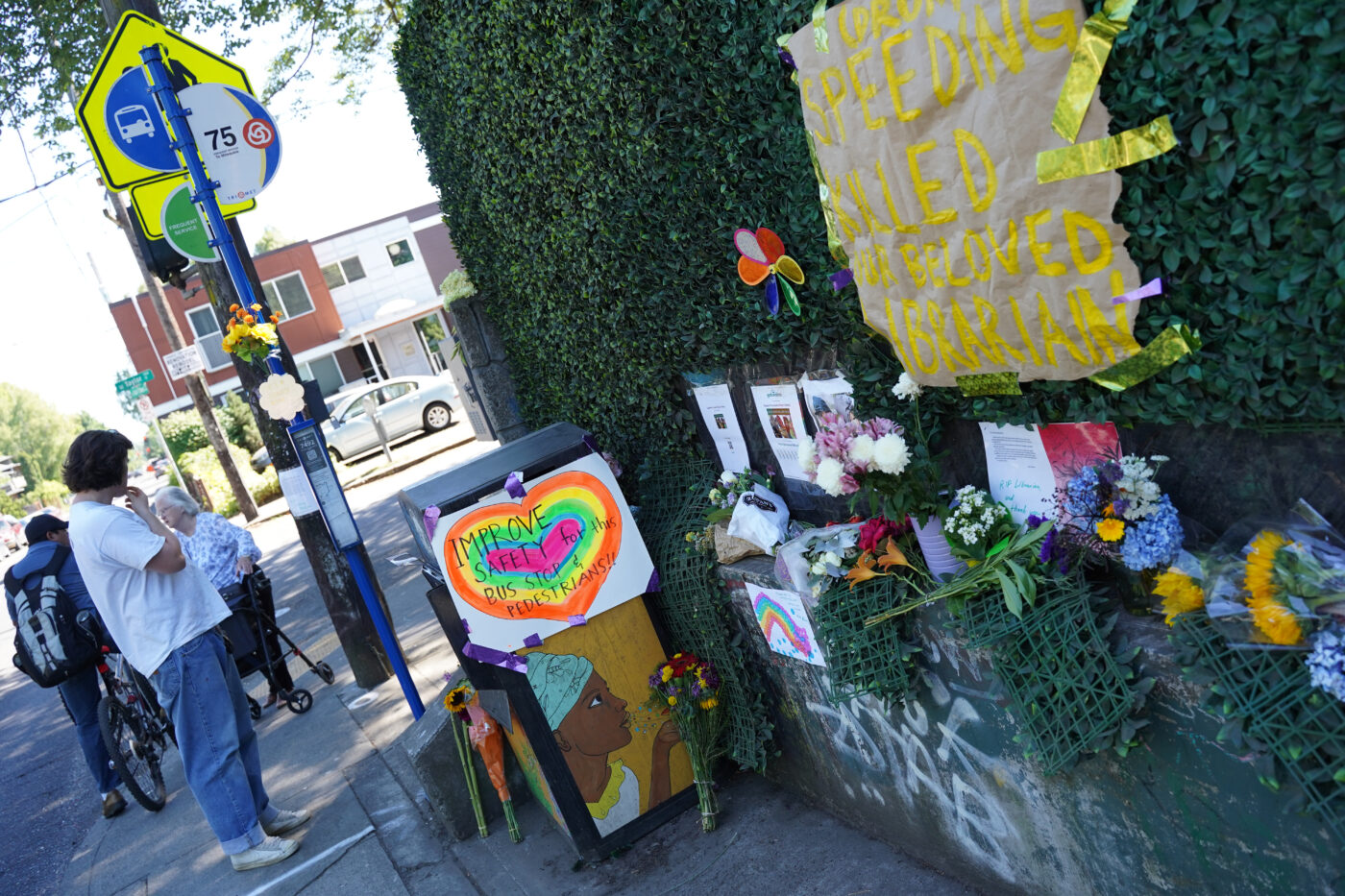



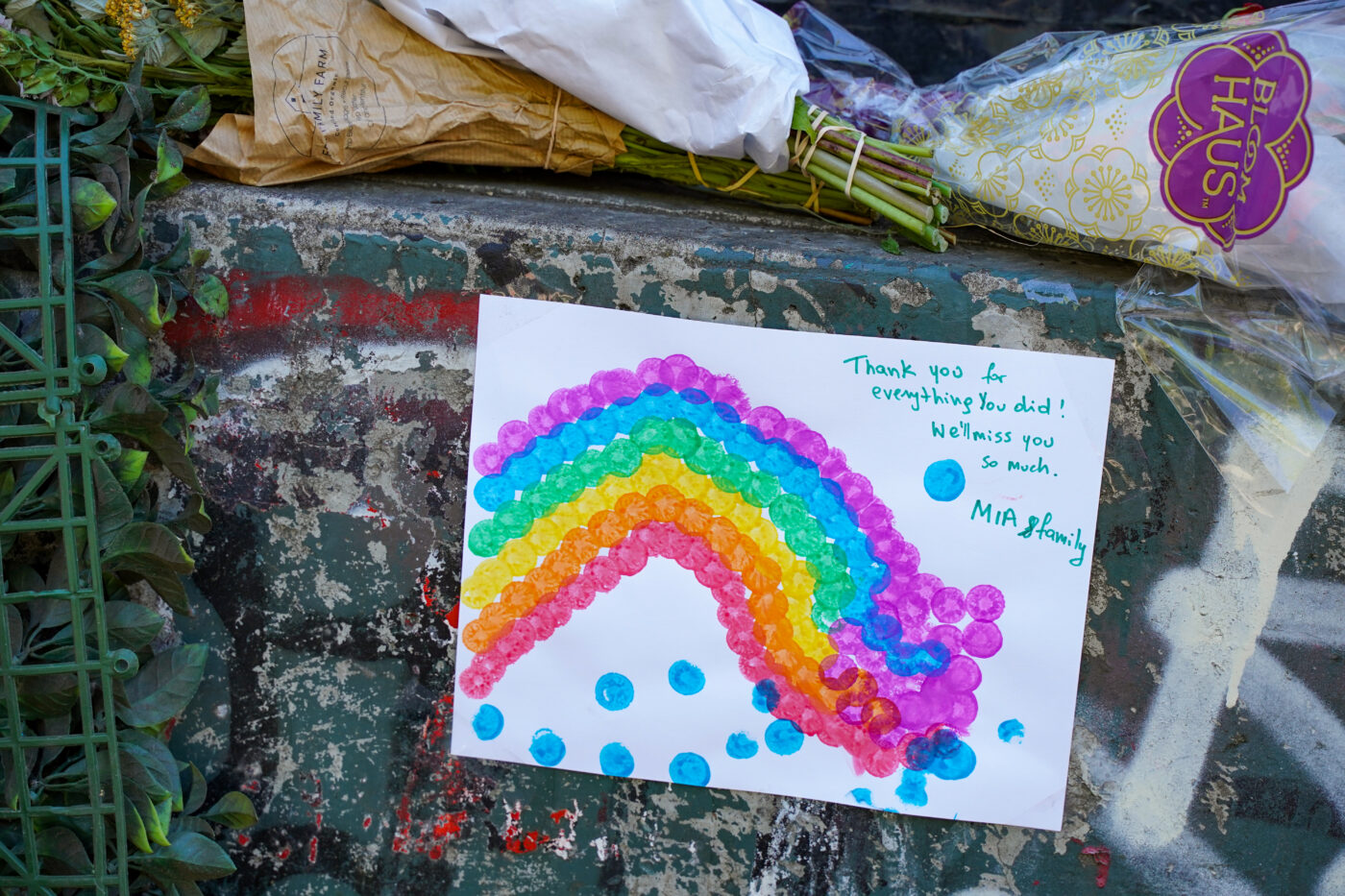
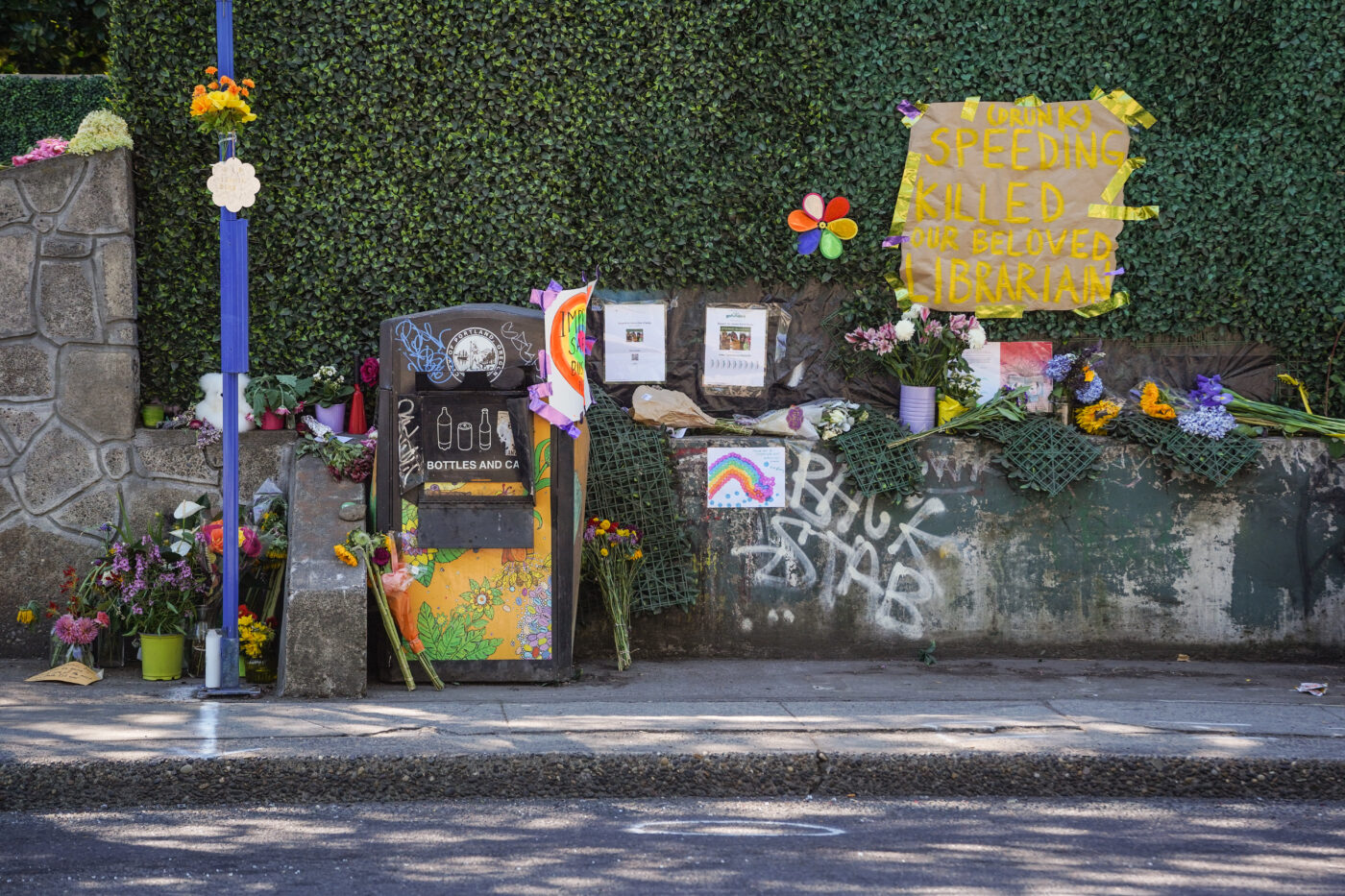
I spent more than an hour at the scene Tuesday afternoon and watched numerous people walk and bike by. One older woman I talked to said she raised two kids a few blocks away. “When they were little we said if they are ever caught bicycling near 39th [now Cesar Chavez], we’ll take their bikes away for two months. It’s just so dangerous here.”
As a steady stream of bicycle riders crossed on the SE Taylor neighborhood greenway, people walked back and forth on the very narrow sidewalk Diaz was likely standing on before she was killed.
Cesar Chavez Blvd is a four-lane thoroughfare with no shoulder. It’s a stroad where drivers go 35 mph just inches from people only protected by flesh and bone and where there is no room for error. On the west side were Diaz was hit, the sidewalk is so narrow — about 3-4 feet wide — that two people walking in opposite directions cannot fit without contorting their bodies or walking in the street (see photos below).
It’s impossible to claim we are serious about road safety when we have streets that look like this. But it’s not impossible to do something about it.
The Portland Bureau of Transportation said yesterday that people need to slow down and not drive drunk. That’s a necessary sentiment, but it is far too weak in comparison the threat we all face.
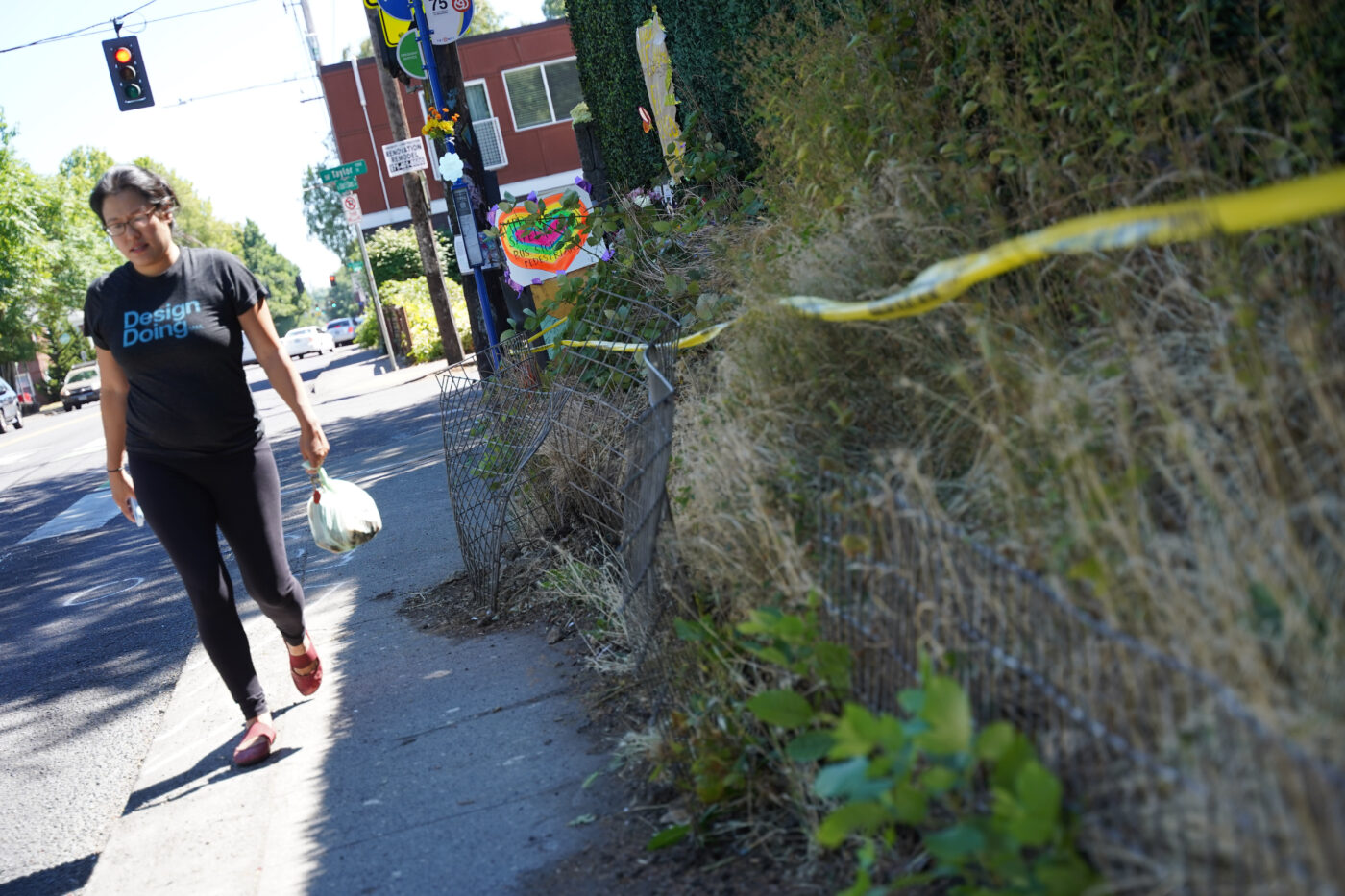
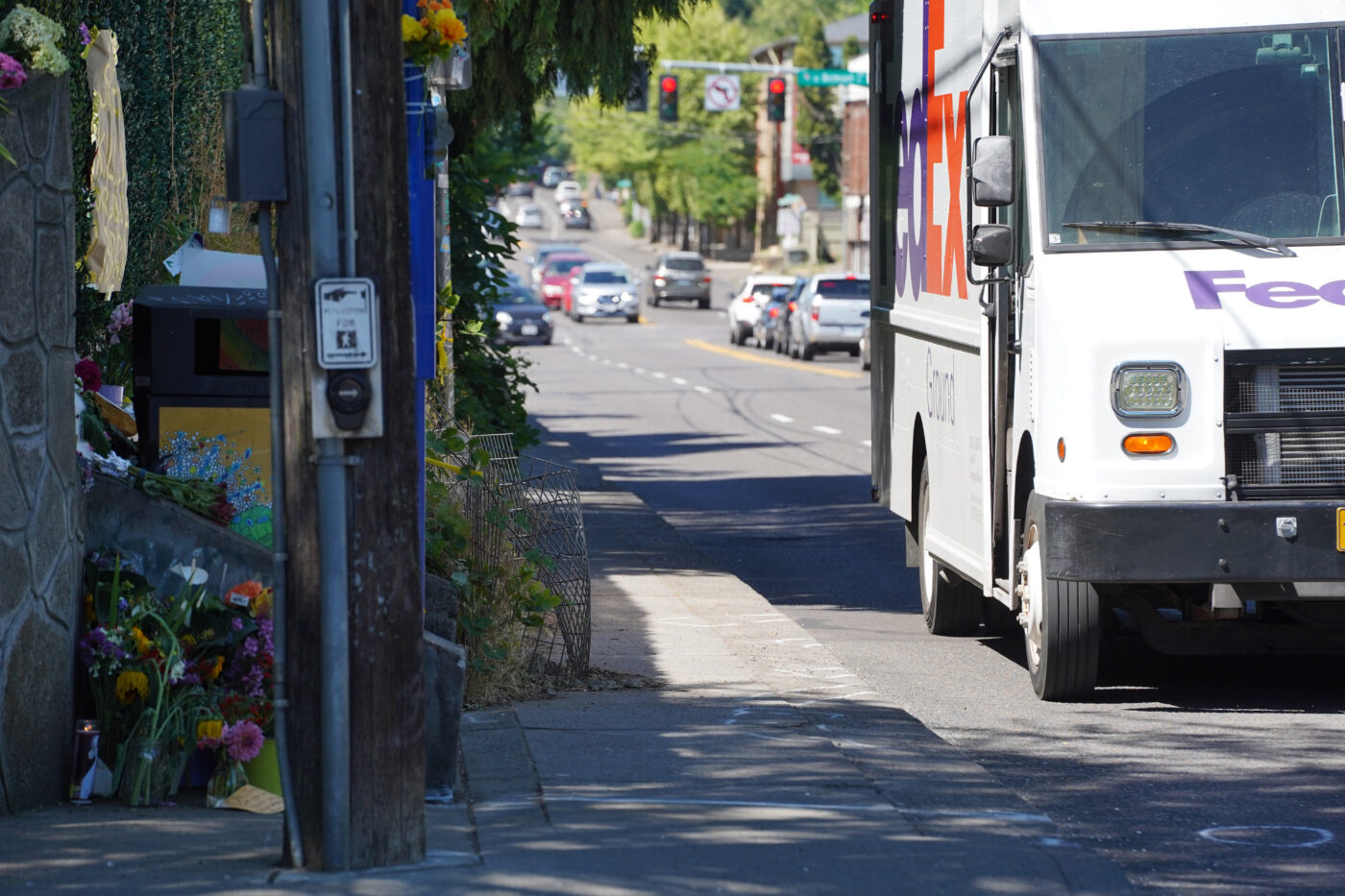

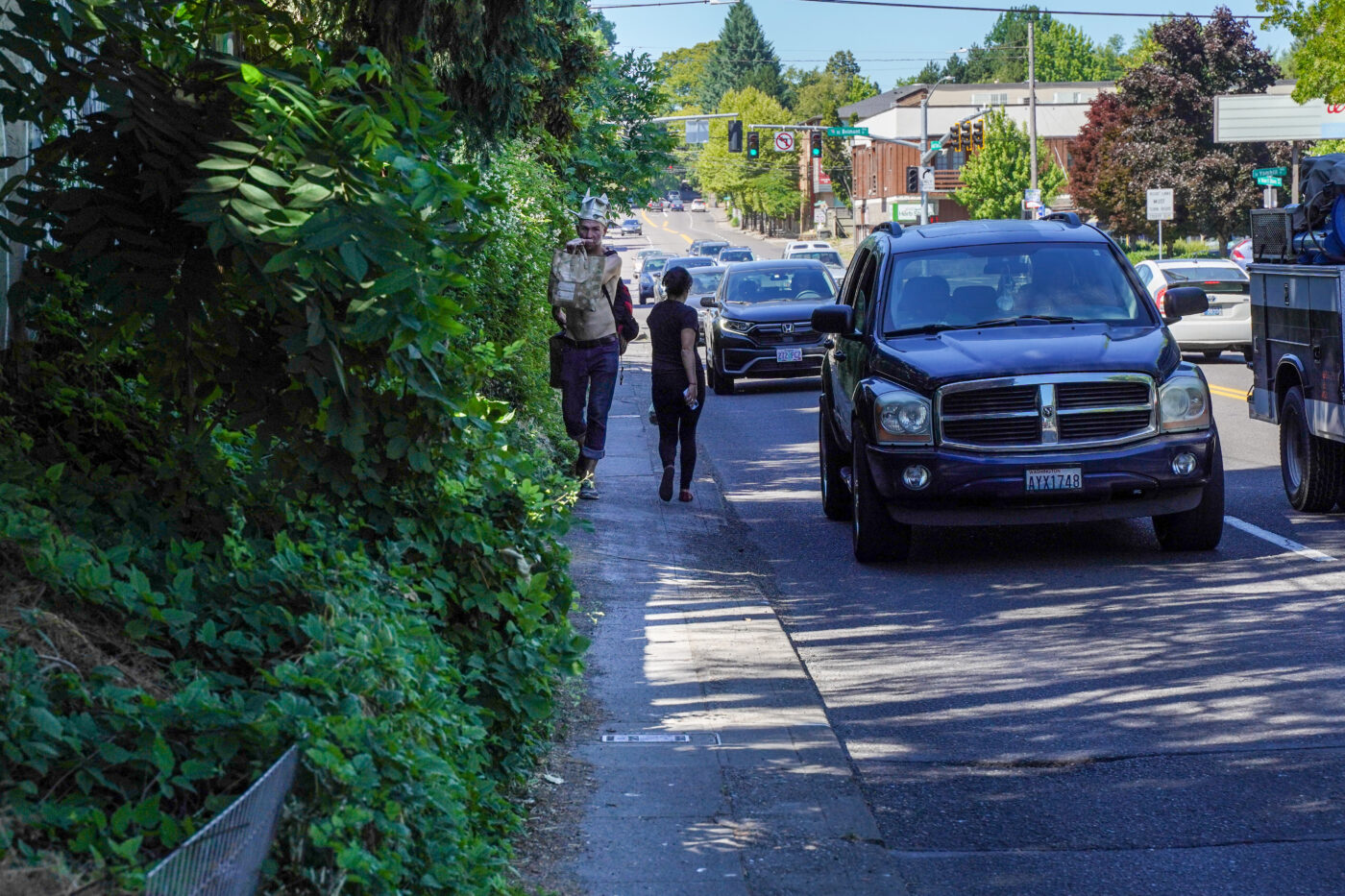

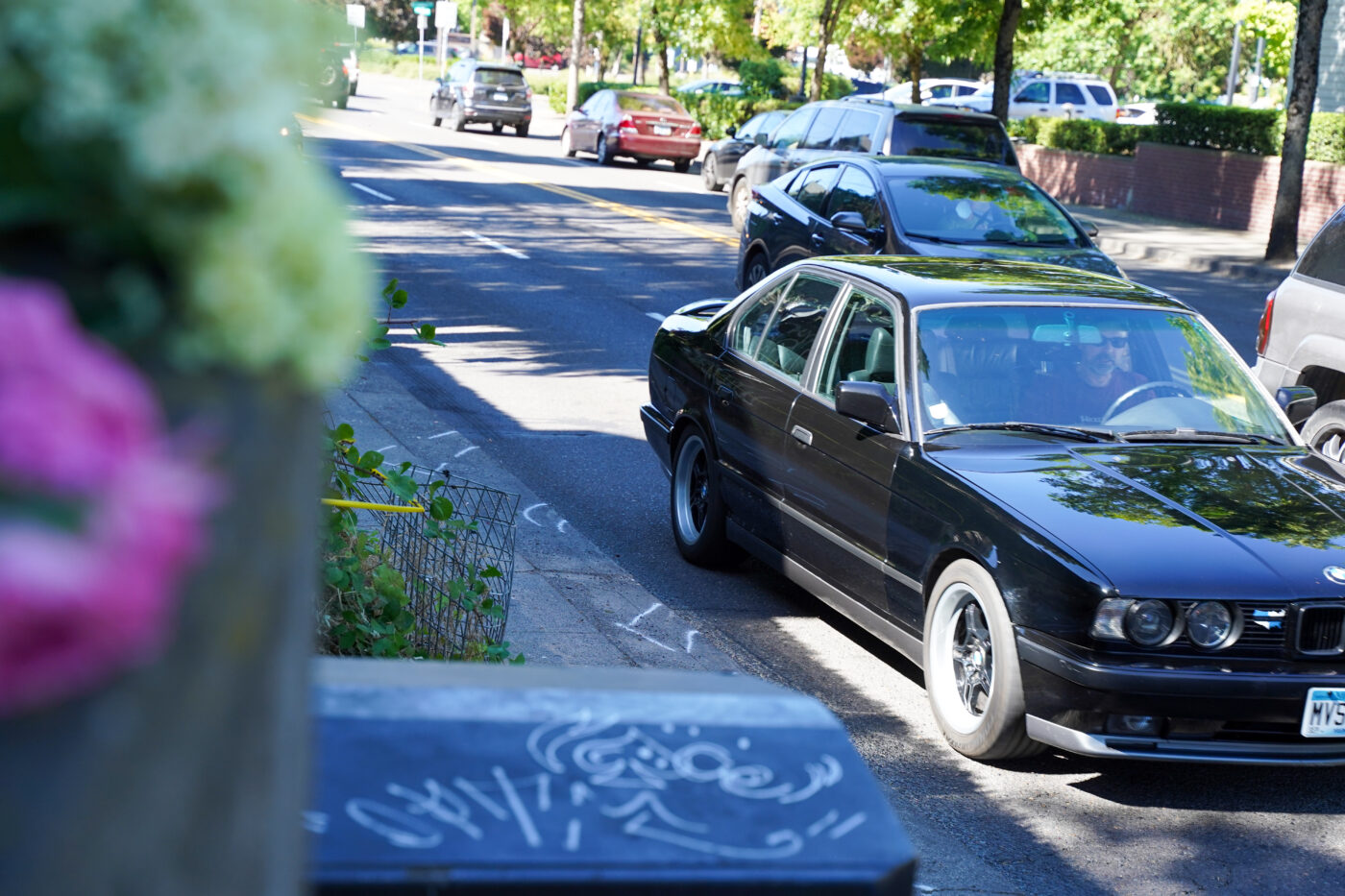
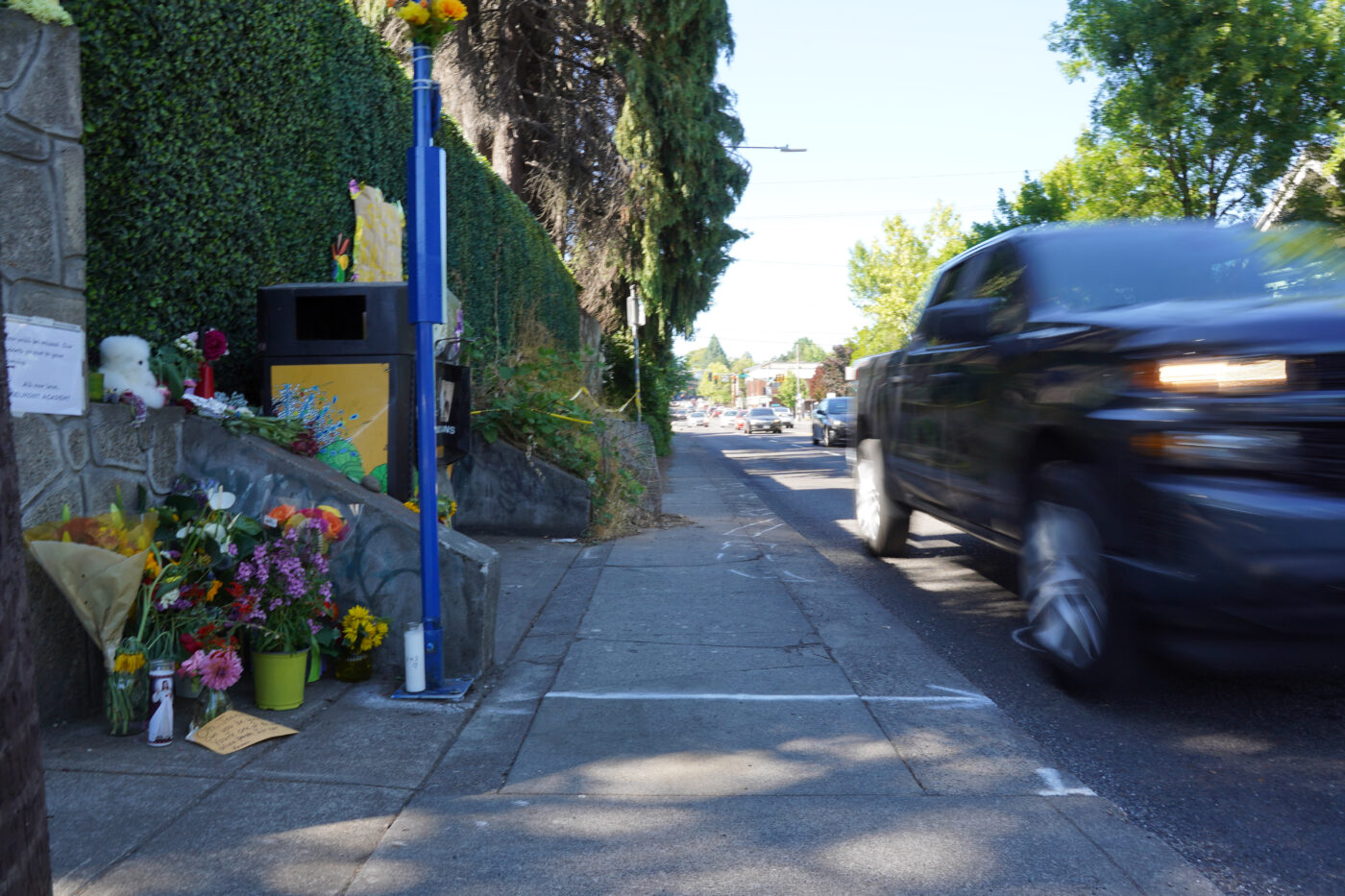


Diaz is the second person to be killed in less that one year by a speeding, reckless driver while waiting at a bus stop on a PBOT-owned street. She was the fifth person to die in a traffic crash in 10 days. We are trending toward even more deaths this year than last — despite our city’s dedication to Vision Zero. Our streets are increasingly feeling like a war zone where drivers are the occupying force and everyone else is made to run for cover and hope they don’t get caught in the crossfire.
The gap between the threat we face (drivers and their cars) and the mitigation we most often deploy (paint, plastic, and “pretty please!”) is where people are hurt and killed. Our tactics must change if we want to close that gap.
We talk a lot about protected bike lanes — PBOT has even tried to make them their default practice — but it’s time to extend that to sidewalks and bus stops. We need protected sidewalks at locations where there is no shoulder and where nothing separates a sidewalk from a lane of car traffic. We also need TriMet to consider protected bus stops. And I’m not talking about paint and plastic wands. It’s time to upgrade the artillery to steel bollards, guardrails, and/or concrete walls and barriers.
There is room for these and other changes on Cesar Chavez, like perhaps a road diet where we have three lanes instead of four, but it would mean reducing space for driving. Are local elected leaders up for doing that? Only if they care more about healing the heartache of our community and victims’ families more than facing potential political backlash.
PBOT is making solid progress with road diets and other projects citywide, but it’s not happening fast enough and their budget might not allow it to continue. In the shorter-term, while we work to increase enforcement (where are those promised photo cameras PBOT?), improve traffic culture, and fix the root causes of the overlapping social ills that lead to so much of this death and destruction, we must create more physical protection.
We must defend these spaces from the scourge of unsafe drivers.
Where Diaz was killed is either a neighborhood where people will feel like it’s safe enough to leave their houses on foot and bike — or it’s a highway where the only safe option is to get inside a car. As the deaths continue to tick upward, it’s becoming terrifyingly obvious that we cannot have both. The only question is, which one will we choose?

